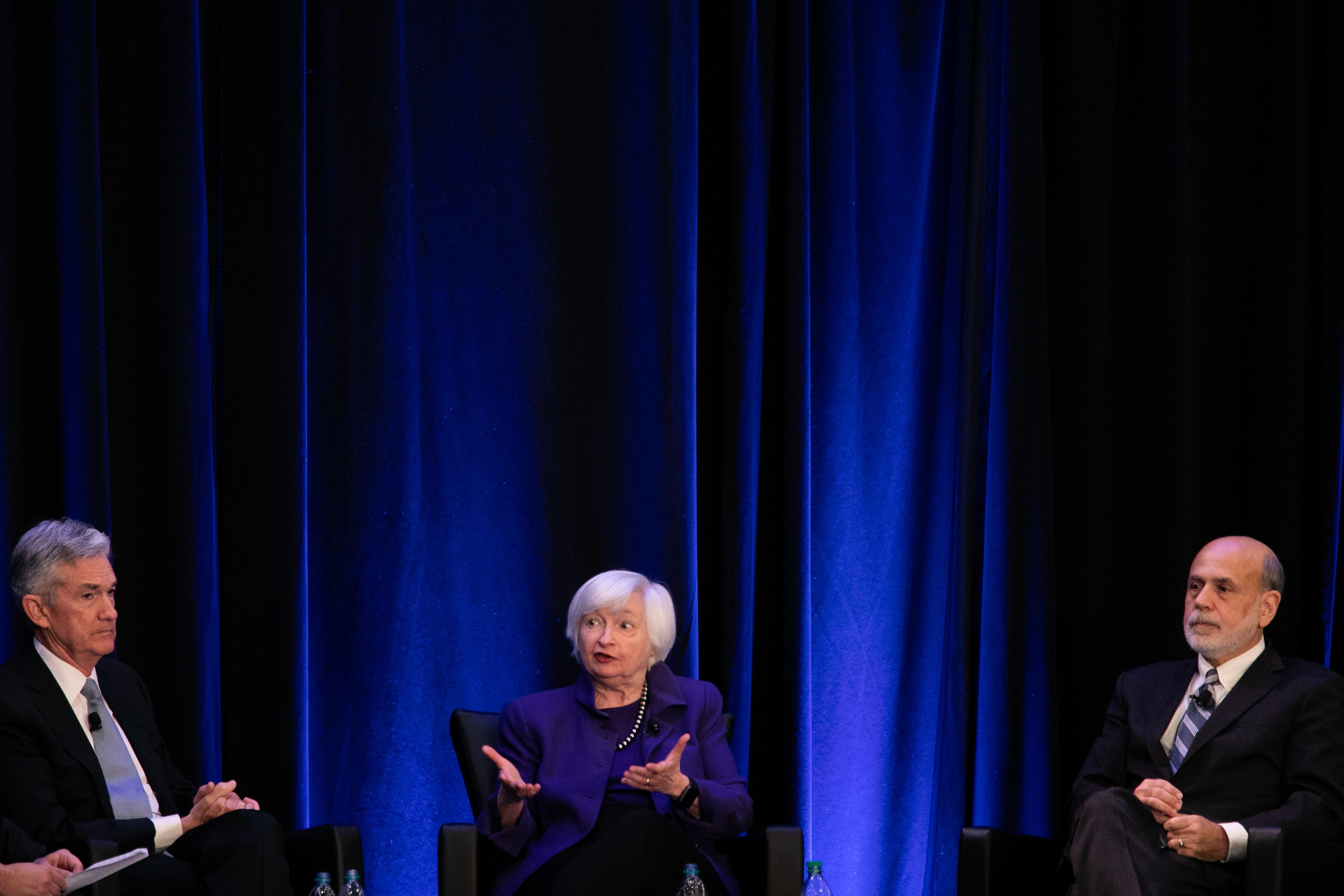Can you hear me now? Fed’s Powell learns to communicate
Federal Reserve Chair Jerome Powell (L), unlike his predecessors Janet Yellen (C) and Ben Bernanke (R), is not an economist and has found his plain spoken style can create problems (Jessica McGowan)
Washington (AFP) – Explaining the nuance of monetary policy to the public is always a challenge, but Federal Reserve Chairman Jerome Powell has discovered the hard way the downside of trying to be too clear.
Powell, who has been on the job for just a year, saw late last year how a single misplaced phrase can roil financial markets cause weeks of stock declines.
And starting with the policy meeting this week, he will have ample opportunity to sink or swim, since he will give a press conference after every meeting, eight times a year rather than four.
He had a bumpy ride in the final weeks of 2018 and repeatedly was obliged to walk back comments that caused heartburn on markets.
During the crisis, the Fed’s communications were relatively easy: They simply had to repeat over and over that they would keep interest rates low for an extended period.
But with more and more signs the US economy has peaked, and the Fed close to the end of the current cycle of rate increases, signaling the central bank’s intentions clearly is fraught with pitfalls.
It is especially challenging since markets are more skittish when Fed policy is changing, and tend to obsess over slight changes to language — even more so when it happens amid a massive trade war with China and others, and with President Donald Trump vocally criticizing the Fed’s every move.
“I don’t think they’ve done terrifically well,” longtime Fed watcher David Wessel of the Brookings Institution said of the Powell central bank.
“In part, it’s a challenging moment, and in part there’s a new chairman and no matter how much you think you’re ready for this, it’s only once you get the job do you appreciate how loud is the megaphone you’ve been handed,” Wessel told AFP.
– R-star? Neutral? What? –
Powell, who unlike his predecessors was an investment banker, not an economist, got into trouble in early October when he said that after three rate increases last year the Fed was still “a long way from neutral.”
In macroeconomic equations, R-star, or neutral, is the level at which the Fed’s benchmark lending rate — which is used to set car loans, mortgages and all other forms of borrowing — is neither stimulating nor restricting the economy.
His comment implied there were many more rate hikes to come. Amid signs the economy was slowing, and likely to slow further amid the trade war, markets tanked.
Fed sources and later New York Federal Reserve Bank President John Williams, as well as Powell, came out publicly to walk back that statement, and clearly signaling the Fed was ready to pause its rate increases.
It happened again in December when he referred to the Fed effort to reduce the massive securities holdings built up during the global financial crisis as being on “autopilot.”
Markets did not like that either, since it implied the Fed would not reconsider the procedure — which puts upward pressure on interest rates — even if economic conditions changed.
“It’s the type of thing people say when they’re really not thinking hard and the market seizes on it,” former Fed economist Joseph Gagnon told AFP.
Powell prides himself on being plain spoken but clear speaking does not always mix well with a central bank.
Gagnon, a senior fellow at the Peterson Institute for International Economics, said the key point to communicate now is that the central bank will respond quickly.
In the aftermath of the crisis, it would have taken a very big surprise in economic data for them to change their path.
Now “very small changes in inflation or growth of the economy could have big effects” on policy, he told AFP.
– ‘The world changed’ –
Wessel of the Brookings Institution said any Fed chief would find it hard to communicate in the current environment, especially when Trump has “found ways to shoot the economy in every one of its toes.”
But Powell had to change the messaging “because the world had changed.”
And, while there are advantages to plain speaking, “it’s hard to convey nuance,” Wessel said.
Williams, the New York Fed chief and formerly head of the San Francisco branch, was prescient three years ago when he warned about trying to explain too much about complex and uncertain monetary policy.
The public “has only so much bandwidth dedicated to central bank messaging,” he said.
He warned that “like a sledgehammer” Fed communications “can be a powerful tool when it’s needed. But, like a sledgehammer, care needs to be taken when and where it is used.”
Disclaimer: This story is published from a syndicated feed. Siliconeer does not assume any liability for the above story. Validity of the above story is for 7 Days from original date of publishing. Content copyright AFP.


